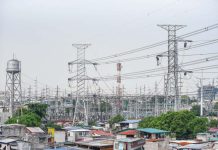
[av_one_full first min_height=” vertical_alignment=” space=” custom_margin=” margin=’0px’ padding=’0px’ border=” border_color=” radius=’0px’ background_color=” src=” background_position=’top left’ background_repeat=’no-repeat’ animation=”]
[av_heading heading=’DOF chief mulls ‘reverse’ job fairs to bring OFWs back home’ tag=’h3′ style=’blockquote modern-quote’ size=’30’ subheading_active=’subheading_below’ subheading_size=’18’ padding=’10’ color=” custom_font=” av-medium-font-size-title=” av-small-font-size-title=” av-mini-font-size-title=” av-medium-font-size=” av-small-font-size=” av-mini-font-size=” admin_preview_bg=”][/av_heading]
[av_textblock size=” font_color=” color=” av-medium-font-size=” av-small-font-size=” av-mini-font-size=” admin_preview_bg=”]
February 11, 2018
[/av_textblock]
[av_textblock size=’18’ font_color=” color=” av-medium-font-size=” av-small-font-size=” av-mini-font-size=” admin_preview_bg=”]
MANILA – Should the Philippine government start considering holding job fairs overseas to lure back Filipinos in the construction sector for the massive “Build, Build, Build” program?
Department of Finance (DOF) secretary Carlos Dominguez III thinks so.
Dominguez said he had been informed about the possibility of lack of skilled manpower such as technicians, welders and those needed for finishing jobs.
The finance chief said he met with some government officials and broached the idea for infrastructure-focused government agencies to hold job fairs abroad, in areas where there are large numbers of overseas Filipino workers (OFWs), in coordination with contractors.
Asked about the possible salary rate here compared overseas, Dominguez said local companies had to adjust to this.
“Local companies have to understand that skilled workers are acceptable anywhere in the world and if you want to get skilled workers, you have to compete,” he said.
Dominguez said the job fairs, if these were really needed to augment local manpower, may be held in coordination with the Department of Labor and Employment (DOLE).
“I don’t know if it (lack of labor force) has reached that (worrying) level already but we should be prepared to conduct a job fair. We want to talk to TESDA (Technical Education and Skills Development Authority) and start re-orienting their program to more jobs with high demand,” he added.
The current administration plans to spend at least PHP8 trillion until the end of its term in mid-2022 to build infrastructure nationwide, most especially in Mindanao, which badly needs it.
Under the 2017-2022 Public Investment Program (PIP), an estimated P7.7 trillion, or about 72.71 percent of the total requirement, is needed to accelerate infrastructure development, alone. The amount covers some 4,490 projects.
Aside from the projects under the infrastructure development program, about 495 additional projects amounting to around PHP1.31 trillion are included in the other chapters of the PIP, data from the National Economic and Development Authority (NEDA) showed.
The planned public infrastructure spending is estimated to contribute about 2.5 percent in gross domestic product (GDP) this 2018, 1 percent in 2019, 0.40 percent in 2020, 0.50 percent in 2021 and 1 percent in 2022.
With the government’s Build, Build, Build program, the construction sector is seen as among the major drivers of domestic growth. (PNA)
[/av_textblock]
[/av_one_full]



